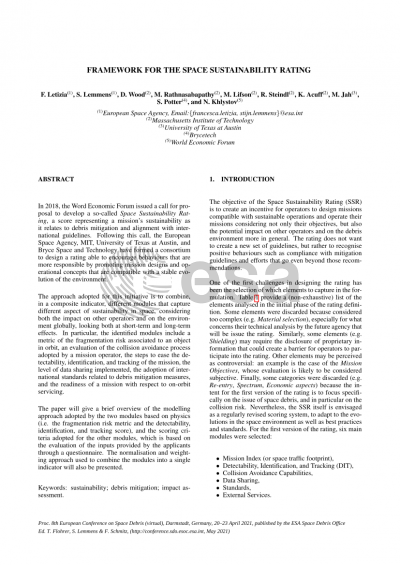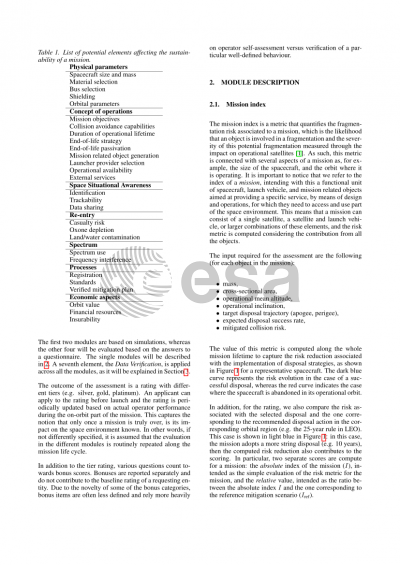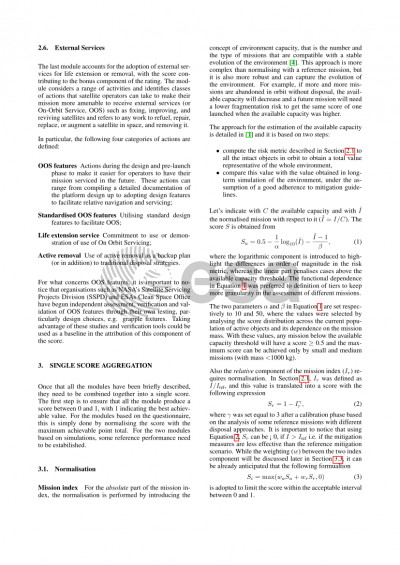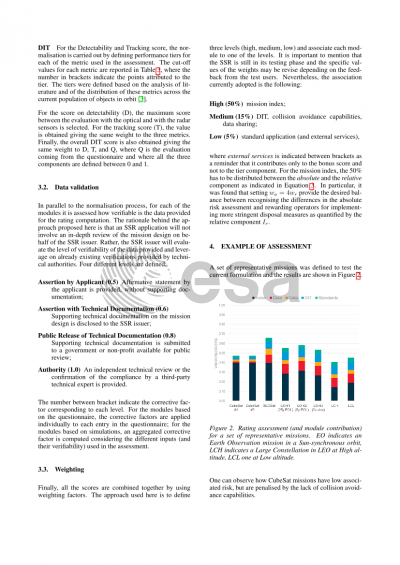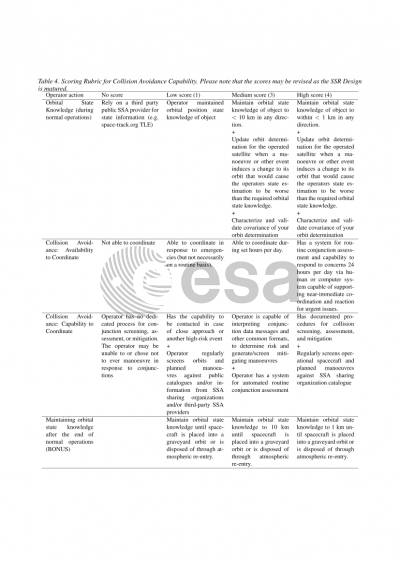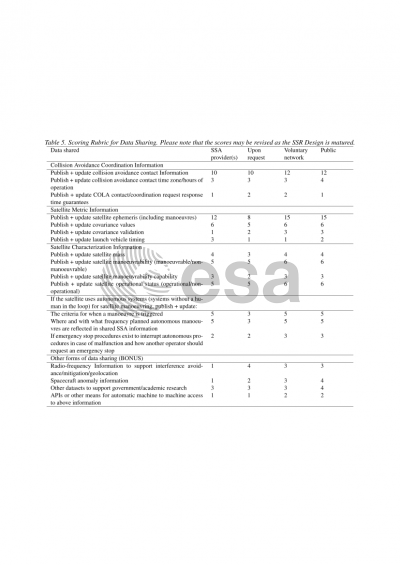Document details
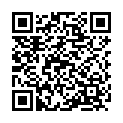
Abstract
In 2018, the Word Economic Forum issued a call for proposal to develop a so-called “Space Sustainability Rating”, a score representing a mission’s sustainability as it relates to debris mitigation and alignment with international guidelines. Following this call, the European Space Agency, MIT, University of Texas at Austin, and Bryce Space and Technology have formed a consortium to design a rating able to encourage behaviours that are more responsible by promoting mission designs and operational concepts that are compatible with a stable evolution of the environment.
The approach adopted for this initiative is to combine, in a composite indicator, different modules that capture different aspect of sustainability in space, considering both the impact on other operators and on the environment globally, looking both at short-term and long-term effects. In particular, the identified modules include a metric of the fragmentation risk associated to an object in orbit, an evaluation of the collision avoidance process adopted by a mission operator, the steps to ease the detectability, identification, and tracking of the mission, the level of data sharing implemented, the adoption of international standards related to debris mitigation measures, and the readiness of a mission with respect to on-orbit servicing.
The paper will give a brief overview of the modelling approach adopted by the two modules based on physics (i.e. the fragmentation risk metric and the detectability, identification, and tracking score), and the scoring criteria adopted for the other modules, which is based on the evaluation of the inputs provided by the applicants through a questionnaire. The normalisation and weighting approach used to combine the modules into a single indicator will be presented, together with the mapping of the score to a tier-level system, which is used to communicate the rating.
Finally, the paper will present some applications of the proposed framework on a range of different missions to calibrate the scoring and verify, both within the consortium and with external stakeholders, the consistency of the proposed rating.
Preview
